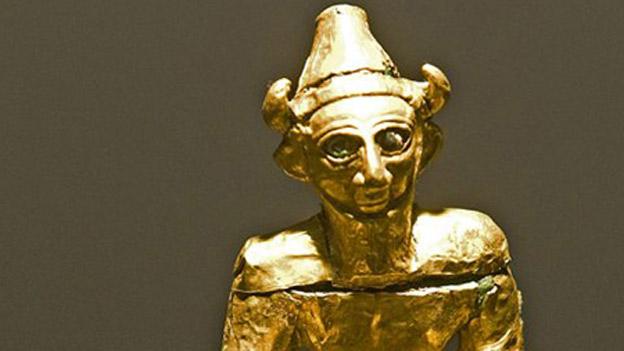Islamic State militants 'destroy Palmyra statues'
- Published
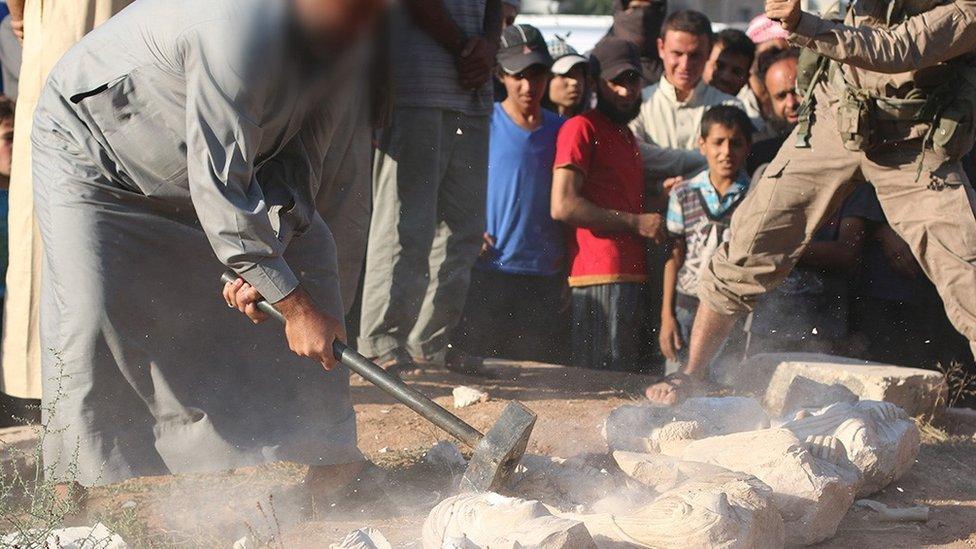
The destroyed statues bore similarities to those previously displayed at Palmyra's museum
The Islamic State group has published photographs of militants destroying what it says are artefacts looted from the ancient ruins of Palmyra in Syria.
Six statues are shown being hit with sledgehammers while a crowd looks on.
The jihadist group said the statues had been seized from a smuggler, who was pictured being whipped as a punishment.
Meanwhile, the UN's cultural agency has said antiquities plundered by IS in Iraq and Syria are moving towards traditional markets.
Irina Bokova, who heads Unesco, said the markets included possibly those in London, Belgium, Switzerland and others.
Syria's antiquities director Maamoun Abdelkarim said on Thursday the IS group had destroyed a 2,000-year-old statue of a lion from the Palmyra ruins.
Mr Abdelkarim called the destruction of the three-metre (10ft) statue, known as the Lion of al-Lat, "the most serious crime [IS has] committed against Palmyra's heritage."
'Brutal destruction'
Unesco's Director-General Irena Bokova told the BBC that looting was being carried out on an industrial scale and that IS militants were "using the illicit trafficking, the selling of these objects in order to finance extremism and terrorism".

Irena Bokova called for international action to combat the trafficking of artefacts
Ms Bokova also recently warned against "the brutal and deliberate destruction of heritage on an unprecedented scale" taking place across the Middle East and North Africa.
Some 60% of the Old City of the northern Syrian city of Aleppo has been destroyed in fighting between government forces, rebels and IS fighters, while 20% of Iraq's 10,000 archaeological sites now under the control of the IS group.
The group overran Palmyra at the end of May, sparking fears that it might demolish the Unesco World Heritage site, external as it has done with ancient sites in Iraq.
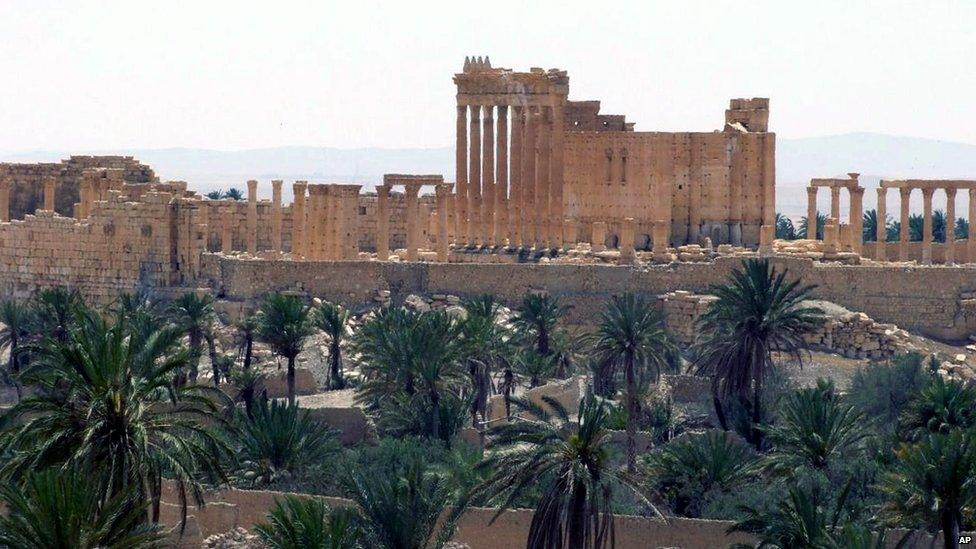
Unesco says Palmyra was one of the most important cultural centres of the ancient world
Last month, Syrian activists reported that IS fighters had planted landmines and explosives around the ruins, but it was not clear whether they intended to destroy or secure them. Palmyra's museum was also reported to have been closed by the group and guards placed outside.
But a week later, IS militants published photographs of what they said was the destruction of two Islamic shrines near Palmyra, which they described as "manifestations of polytheism".
On Thursday, the group's leadership in Aleppo province posted photos online showing the destruction by militants in the town of Manbij of what it said were statues from Palmyra which had been confiscated from a smuggler.
The images were accompanied by a statement that cited the Prophet Muhammad as saying: "Do not leave any statue without obliterating it or any high grave without levelling it."
In February, IS militants released a video showing the destruction of artefacts that were thousands of years old at the central museum in the Iraqi city of Mosul.
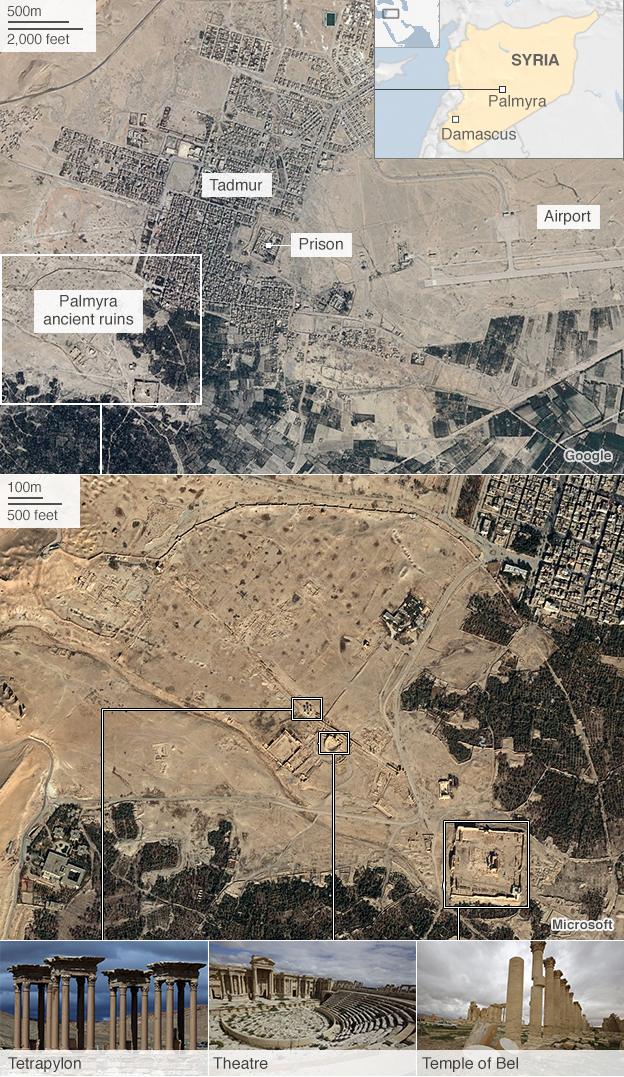
Correction 3 July 2015: The article has been amended to make clear that Mr Bokova said antiquities plundered by IS from Iraq and Syria were moving towards several traditional markets - not just Britain as the article previously stated.
- Published24 August 2015

- Published21 May 2015
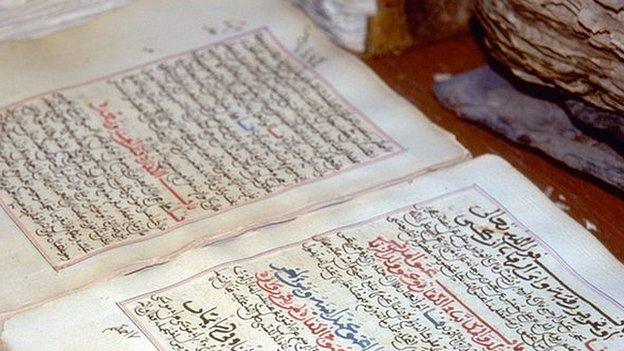
- Published21 May 2015
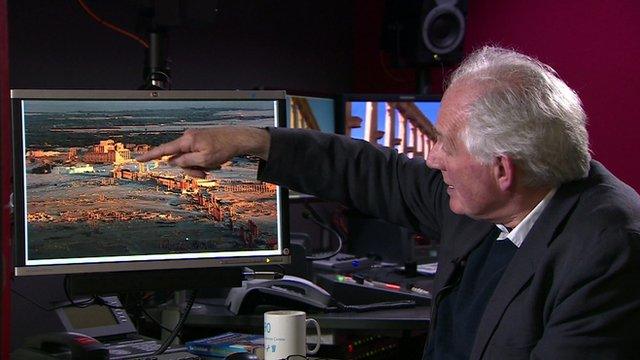
- Published10 July 2014
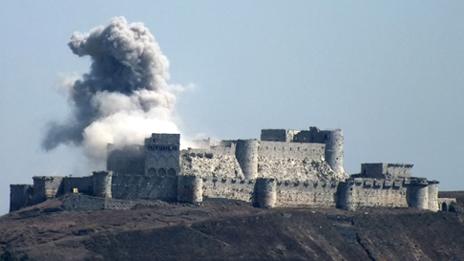
- Published17 February 2015
